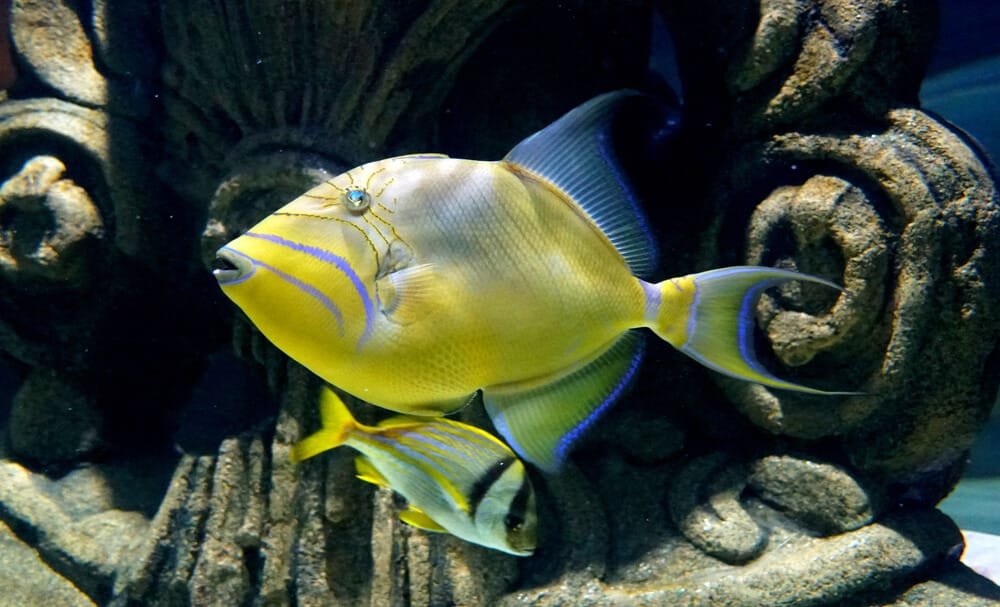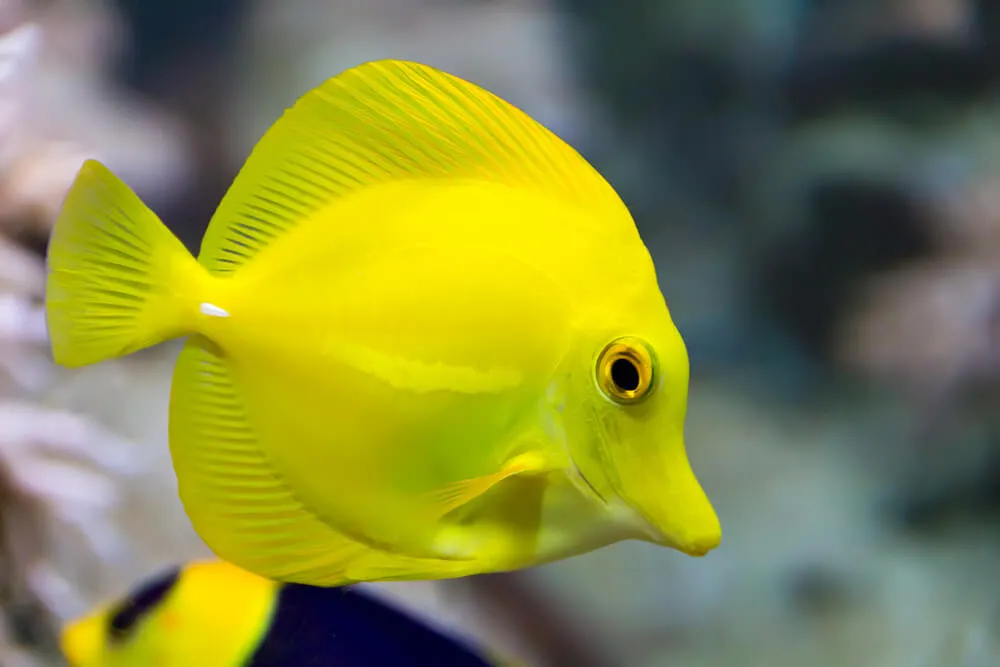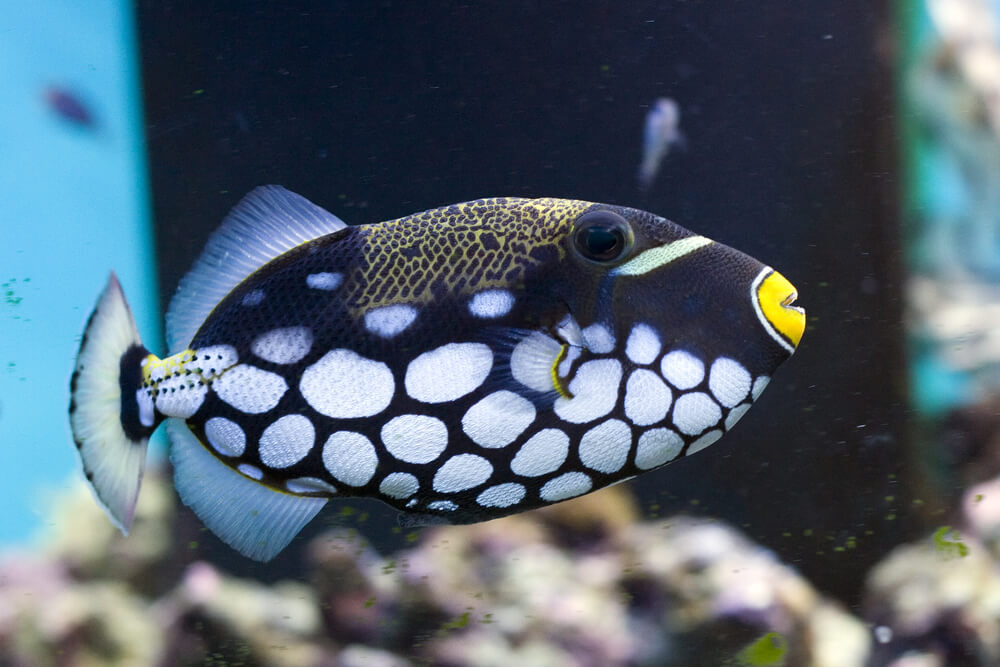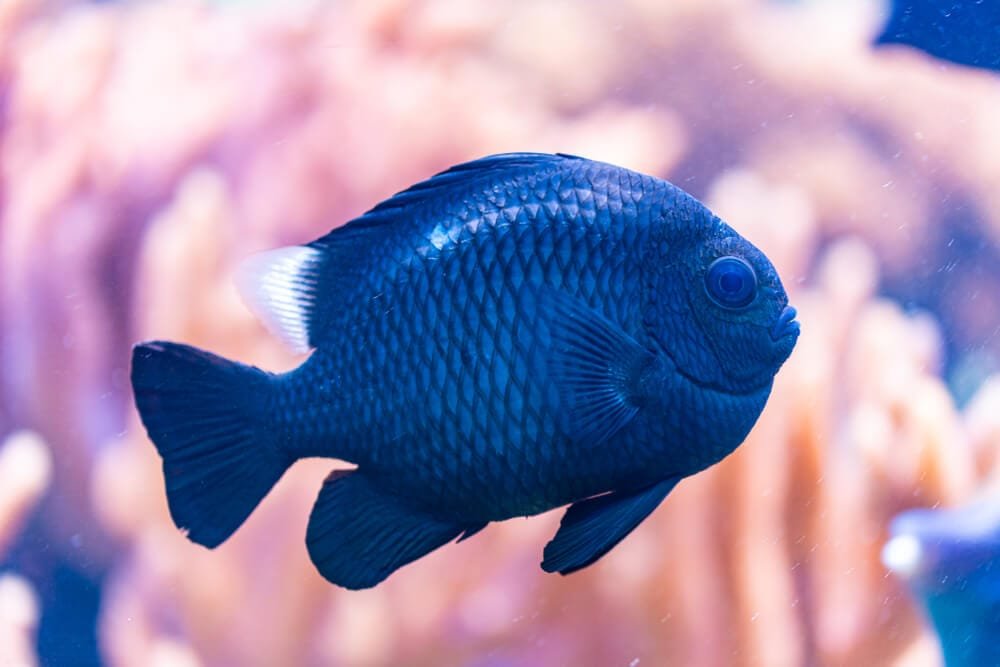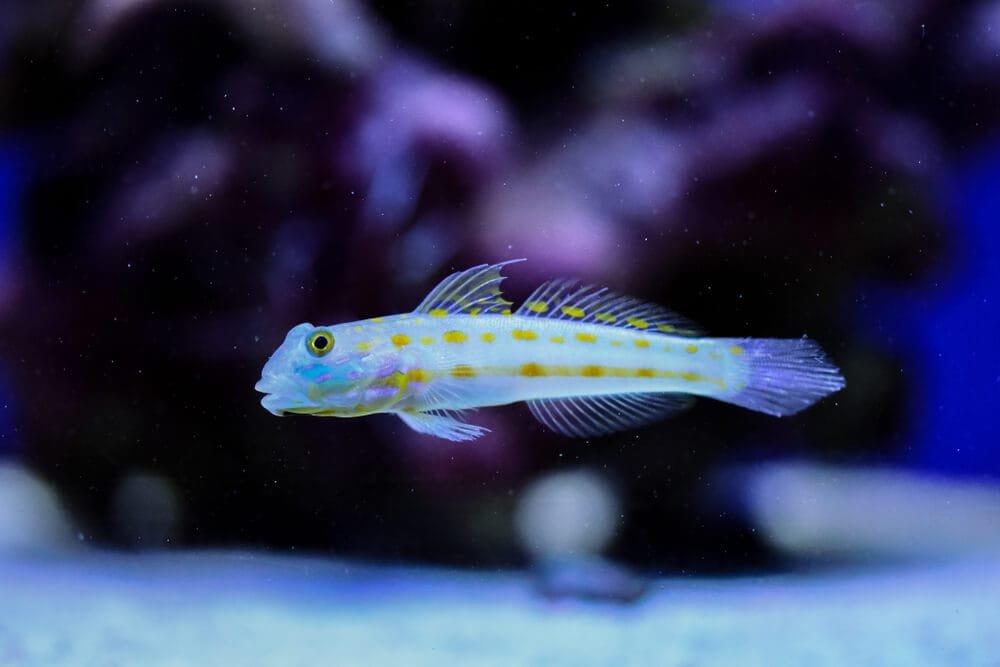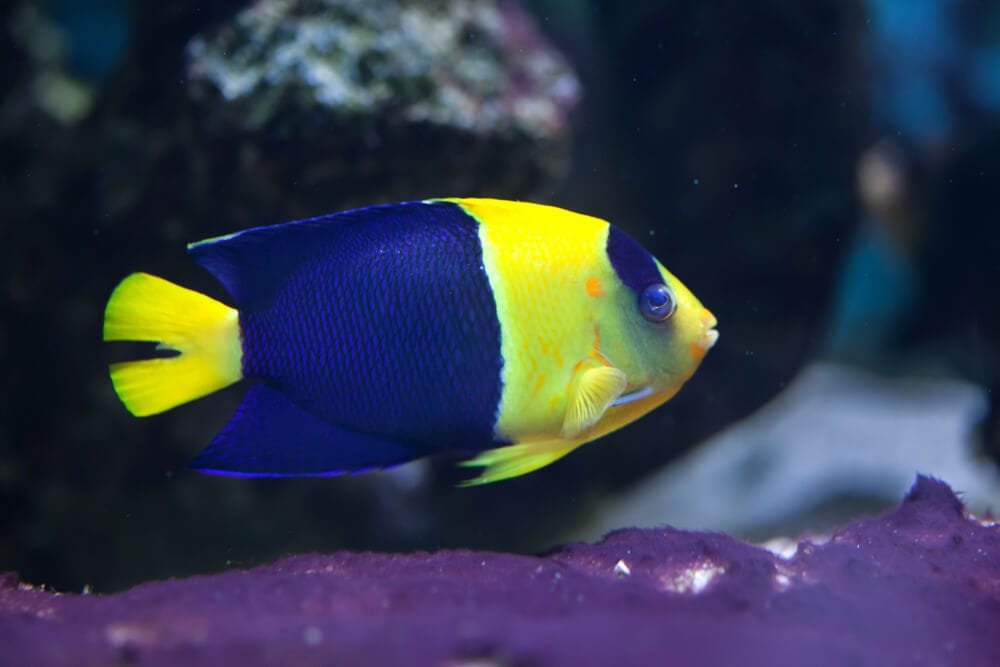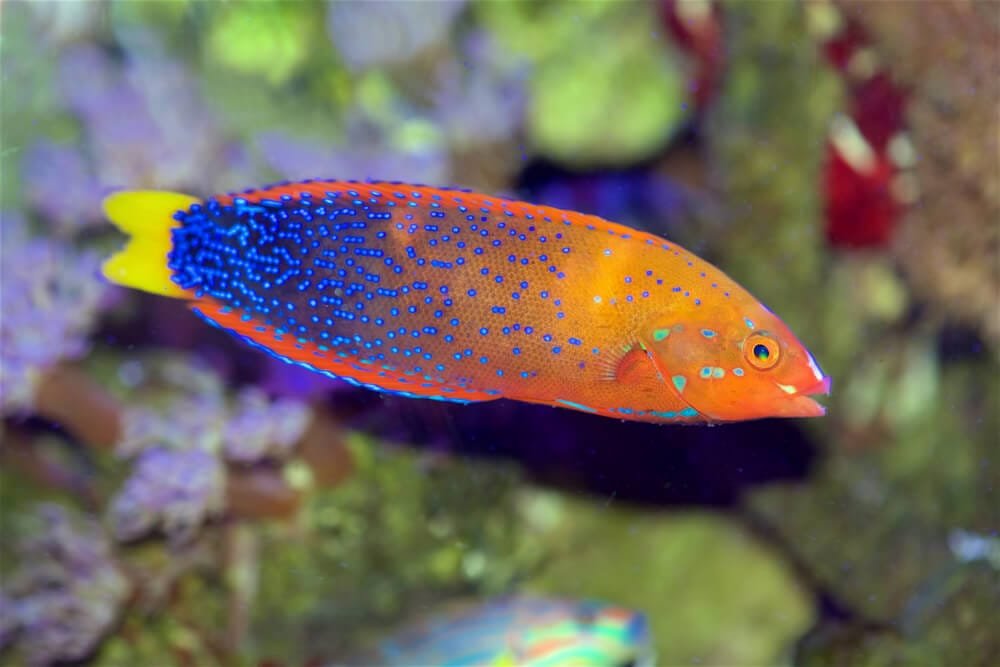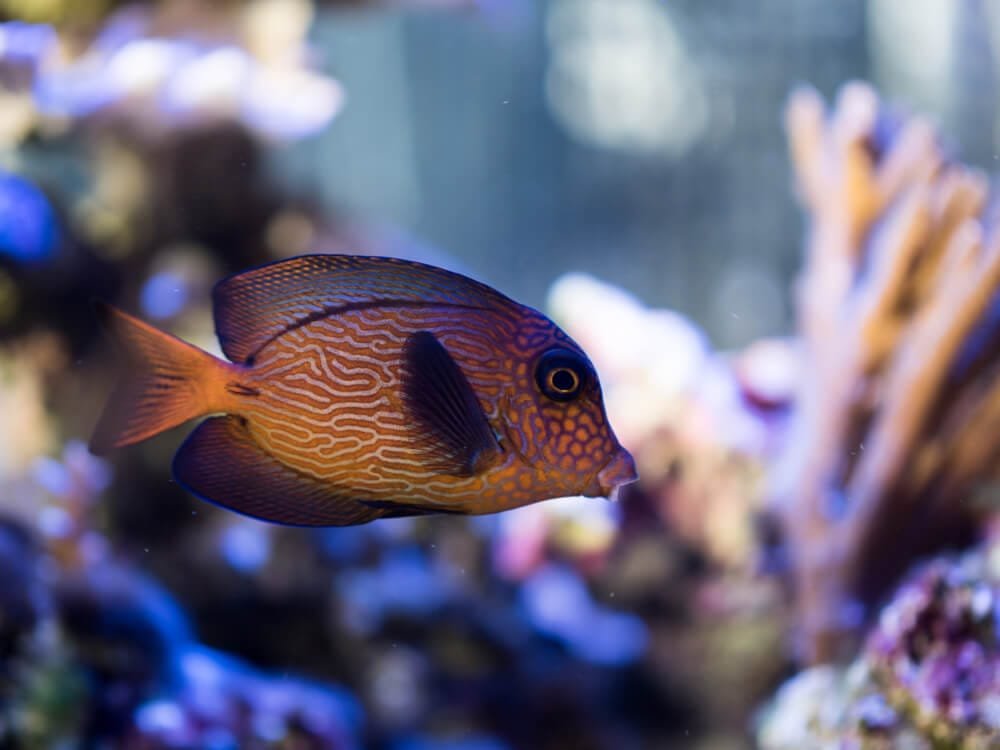Neon Goby: Behavior, Habitat and Interesting Facts
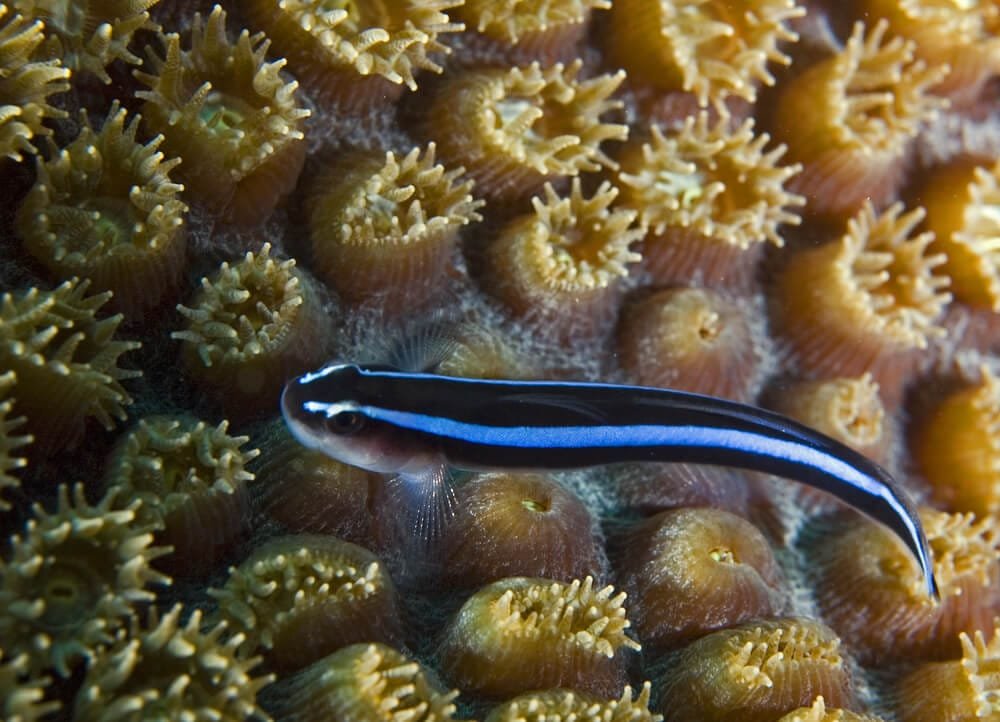
Have you ever heard of the Neon Goby? This fascinating little fish not only boasts vibrant colors that resemble a neon light, but it also possesses a unique survival strategy. Found in the waters of the Indo-Pacific region, the Neon Goby forms a symbiotic relationship with other marine creatures by offering them an essential service – cleaning. In this article, we will explore the remarkable characteristics of the Neon Goby, its exceptional cleaning behavior, and the importance of its role in maintaining the health of coral reefs. Get ready to dive into the mesmerizing world of the Neon Goby!
Physical Description
Size and Shape
The Neon Goby is a small fish that typically grows to a length of 2-3 inches. Its slender body is elongated, with a flattened head and a pointed snout. The body is adorned with a series of beautiful blue and neon-yellow stripes that give the fish its distinctive appearance. The goby has a single dorsal fin and a well-developed caudal fin, which it uses to swim with grace and precision. Its small size and sleek shape make it an excellent swimmer, allowing it to navigate its habitat with ease.
Coloration
One of the most striking features of the Neon Goby is its vibrant coloration. The blue and neon-yellow stripes that run along its body are truly eye-catching, and they seem to glow with an otherworldly radiance. These colors not only make the fish stand out in its underwater environment but also serve as a warning to potential predators. The bright hues signal that the goby is toxic and should be avoided, providing the fish with a natural defense mechanism.
Habitat and Distribution
Natural Habitat
The Neon Goby is primarily found in the warm, tropical waters of the Indo-Pacific region. It favors coral reefs and rocky areas with abundant hiding places, such as crevices and caves. The goby is a fairly territorial fish. It can often be observed perched on corals or other structures, diligently guarding its chosen territory. It seeks shelter among the coral branches, where it can find both protection from predators and a reliable food source.
Geographical Distribution
The Neon Goby has a wide geographical distribution and can be found in many parts of the world. It inhabits the waters of the Indian Ocean, the Red Sea, and the Pacific Ocean, all the way from the east coast of Africa to the waters of Hawaii and French Polynesia. Its ability to adapt to various coral reef ecosystems has allowed it to establish populations across this vast range, making it a commonly encountered and widespread species.
Behavior and Feeding
Social Behavior
Neon Gobies are highly social fish that are often found in small groups. They have a hierarchical social structure, with larger individuals asserting dominance over smaller ones. These groups will often establish territories, which they defend against other individuals and species. Despite their territorial nature, Neon Gobies are known to exhibit cooperative behaviors, such as joining forces to fend off predators or defend their territory. Their interactions with one another are fascinating to observe and demonstrate the complex social dynamics within their communities.
Feeding Habits
The Neon Goby is a carnivorous fish that primarily feeds on small invertebrates and parasites that inhabit the coral reefs. They have a unique feeding behavior known as “cleaning,” where they establish cleaning stations on the reefs. They will perch on a coral branch or rock and wait for other fish, known as “clients,” to approach. The gobies then meticulously clean the clients by removing parasites and dead skin from their bodies, providing a valuable service to the ecosystem. This behavior not only ensures a steady food source for the gobies but also benefits the health of the client fish.
Reproduction
Breeding Behavior
Neon Gobies engage in a fascinating courtship ritual prior to mating. The male begins by performing an elaborate display, flashing his neon-yellow colors and swimming in a zigzag pattern to attract the attention of the female. Once the female is enticed, the pair engage in a spiraling dance, swimming side by side before releasing their gametes simultaneously. This synchronized spawning ensures a higher chance of fertilization and increases the likelihood of successful reproduction.
Larval Development
After the eggs are fertilized, they are left to their own devices. The tiny, transparent larvae are carried away by the currents and go through a process known as larval dispersal. During this time, they experience significant growth and development. As they mature, the larvae undergo a metamorphosis, gradually transforming into juveniles that resemble the adults. Finally, the juveniles settle on the coral reefs, where they will spend the rest of their lives.
Symbiotic Relationships
Cleaning Relationships
One of the most intriguing aspects of the Neon Goby’s behavior is its symbiotic relationship with other fish species. As mentioned earlier, the gobies act as cleaning stations for other fish, removing parasites and dead skin. This mutualistic relationship benefits both the gobies and the client fish. The gobies gain a reliable food source, while the client fish enjoy improved health and well-being. This symbiosis is not only essential for the Neon Goby’s survival but also contributes to the overall balance and sustainability of the coral reef ecosystem.
Symbiosis with Coral
The Neon Goby also forms a symbiotic relationship with coral. It often chooses to establish its territories near living corals, which provide both protection and a suitable habitat. In return, the gobies help keep the corals clean by consuming algae and other pests that may harm the corals. This symbiosis ensures the health and vitality of the coral. It also creates a mutually beneficial partnership between the goby and its coral neighbors.
Predators and Threats
Predatory Threats
Despite their vibrant coloration and toxin warning, Neon Gobies still face numerous predatory threats in their natural habitat. Larger fish, such as snappers and groupers, see the goby as a potential meal and will not hesitate to prey on them. Additionally, some species of predatory crustaceans, like mantis shrimps, can pose a threat to the gobies, especially when they venture outside the safety of their crevices. These natural predators contribute to the selective pressure that shapes the behavior and survival strategies of the Neon Goby.
Human Impact
While natural predators are a part of the Neon Goby’s ecosystem, human activities pose a significant threat to their population. Overfishing and destructive fishing practices can deplete their numbers, disrupting the delicate balance of coral reef ecosystems. Pollution, including chemical runoff and plastic waste, also harms the habitat and can inflict long-lasting damage on the coral reefs. Conservation efforts are crucial to mitigating these threats and ensuring the survival of the Neon Goby and its fragile ecosystem.
Conservation Status
Population Status
The Neon Goby is currently not classified as endangered or threatened on a global scale. However, localized declines in populations have been observed in some areas due to habitat degradation and overfishing. Monitoring and research on population trends are essential to assess the long-term viability of the species and implement appropriate conservation measures.
Conservation Efforts
Various conservation efforts are underway to protect the Neon Goby and its coral reef habitat. Marine protected areas and marine reserves help safeguard the ecosystems where the gobies thrive, allowing populations to recover and flourish. Additionally, education and outreach programs educate local communities about the importance of sustainable fishing practices and the need to protect coral reefs. Such initiatives play a vital role in raising awareness and fostering a sense of stewardship towards the Neon Goby and its fragile environment.
Interesting Facts
Bioluminescence
One intriguing characteristic of the Neon Goby is its ability to produce bioluminescent signals. On moonlit nights, the gobies engage in a mesmerizing display, emitting a faint green glow that illuminates their surroundings. While the exact purpose of this bioluminescence is still not fully understood, it is believed to serve as a form of communication among members of the same species, possibly signaling their presence or attracting mates.
Hermaphroditism
The Neon Goby exhibits a unique reproductive strategy called sequential hermaphroditism. They are initially born as females, and as they grow larger, some individuals undergo a sex change and transform into males. This remarkable adaptation ensures the availability of both female and male gametes within the population, increasing the chances of successful reproduction. Hermaphroditism is relatively rare among fish species, making the Neon Goby’s life cycle even more intriguing and worthy of study.
Interaction with Humans
Aquarium Trade
The captivating beauty and fascinating behavior of the Neon Goby have made it a popular choice among aquarium enthusiasts. These curious and intelligent fish are often sought after for their eye-catching appearance and their ability to interact with other fish in a community tank. However, it is crucial for aquarium owners to ensure that they source their gobies from reputable suppliers who practice sustainable collection methods. By doing so, they can help support the conservation of wild populations and reduce the negative impact on their natural habitats.
Research Importance
The study of the Neon Goby provides valuable insights into various aspects of marine biology and ecological interactions. Researchers often use this species as a model organism to investigate topics such as social behavior, symbiotic relationships, and reproductive strategies. By studying the unique adaptations and behaviors of the Neon Goby, scientists can deepen their understanding of coral reef ecosystems and apply the knowledge gained to other marine organisms and conservation efforts.
Conclusion
The Neon Goby is a captivating and resilient fish that adds vibrancy to the coral reefs it calls home. Its striking coloration, social behaviors, and symbiotic relationships make it a remarkable species worthy of admiration and study. Conservation efforts and sustainable practices are essential in ensuring the survival of the Neon Goby and the delicate balance of the coral reef ecosystems it inhabits. By appreciating and protecting this charismatic fish, we can contribute to the preservation of our precious marine environment for future generations to enjoy.
